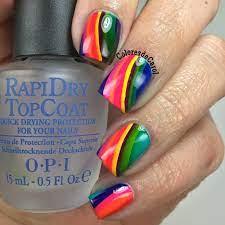The Ultimate Guide To Writing an Effective RFP Response

Request for Proposals (RFPs) are an essential instrument for companies to find suitable vendors for their business needs. The process presents a unique way for service providers to showcase their abilities and potential client’s needs. Crafting an effective RFP response can be a challenging task, but it is also a great opportunity to highlight your company’s strengths. In this article, we will walk you through the process and provide you with a practical guide on how to write a winning RFP response, attracting significant business leads.
Contents
Understanding RFP and Its Importance in Business

An RFP is a document that an organization posts to elicit bids from potential vendors for a product or service. The RFP outlines the bidding process and contract terms and guides how the bid should be formatted. RFPs are used in many industries, including construction, information technology, transportation, and telecommunications.
Responding to RFPs is a crucial aspect of running a business, especially in sectors where contracts are often awarded through this process. A well-crafted response can help your company stand out from the competition and win lucrative contracts.
Before sending a response, you should understand the project requirements and your potential client’s needs. A good grasp of the client’s expectations will enable you to craft a proposal that meets their specific needs.
Using an effective RFP response software can also enhance your chances of success. These platforms help you create accurate and timely proposals, keeping you ahead in the competitive bidding process.
Key Elements to Include in Your RFP Response
Your RFP response should have a clear structure and include all necessary information. Start with a summary that provides a brief overview of your company and the services you offer. This section should grab the reader’s attention and make them want to learn more about your business.
The body of the proposal should include detailed information about your services, including how they meet the client’s requirements, the cost of your services, and your proposed work schedule. Use easy-to-understand language, avoiding jargon that the client may not understand.
One of the vital sections you should not overlook is the case studies or examples of previous work. They resonate well with potential clients as they provide practical instances of how your business operates.
Lastly, conclude your response with a compelling call to action. Encourage the client to contact you for further discussions or even propose a meeting to elaborate more about your services.
Crafting a Winning Proposal: Essential Tips for a Successful RFP Response
Crafting a winning proposal requires careful planning and a customer-centric approach. Start by doing your homework about the prospective client. Understanding their industry, needs, and company culture will help you tailor your proposal to resonate with them.
Always remember to answer every question in the RFP, leaving no room for ambiguity. Provide detailed responses and ensure your information is accurate, reliable, and up-to-date. Failure to answer a question or providing incorrect information can potentially disqualify your bid.
Avoid generic responses, and strive to customize your proposal as per the client’s requirements. Use your understanding of the client’s industry, needs, and company culture to develop a tailored solution that stands out.
Proper proofreading is essential before submission. A response riddled with typos and grammatical errors can turn off potential clients and tarnish your company’s image.
Common Mistakes To Avoid When Formulating an RFP Response

To increase your chances of winning, avoid common mistakes such as providing incomplete information or missing the submission deadlines. Always ensure that your RFP responses are timely,and comprehensive, and address all the requirements put forth by the client.
Additionally, refrain from submitting a bid for a project that your company cannot deliver. Biting off more than you can chew can lead to project failure and damage your business reputation in the long run.
Your response should not only focus on your company and its offerings. Instead, highlight how you can solve the prospective client’s problems and add value to their business.
Inflating costs is another mistake you should avoid. While you should aim to make a profit, inflating costs can scare away potential clients. Always provide a realistic and competitive pricing structure based on the value that you will deliver.
Overall, writing an effective RFP response demands time, effort, and a deep understanding of your potential client’s needs. Applying the above-mentioned tips while responding to your next RFP could significantly boost your chances of winning. Remember, the goal is not just to win the bid but to forge a long-lasting relationship with the client.
Read Also Ways to Reduce Business Costs





